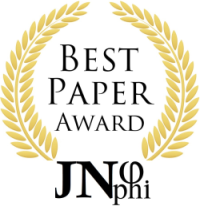Having the Foggiest Idea: A Gradual Account on Mental Images
Abstract
First described by Galton in 1880 and then remaining unnoticed for a century, recent investigations in neuroscience have shown that a condition called aphantasia appears in certain individuals, which causes them to be unable to experience visual mental imagery. Comparing aphantasia to hyperphantasia – i.e., photo-like memory – and considering the neurological basis of perceptual phenomena, we are revisiting Hume's division of perceptions into impressions and ideas. By showing different vivacities of mental phenomena and comparing them to neurological research, we are stating that not only impressions and ideas differ "in the degrees of force and liveliness", but ideas and impressions amongst themselves as well. Such a gradual range of perceptions and mental images bears significant consequences for not only representational theory and historical interpretations but linguistics and semiotics as well.
Keywords:
aphantasia, mental images, hyperphantasia, impressions, signifiedDownloads
Metrics
References
Aldrich MS, Alessi AG, Beck RW, Gilman S. Cortical Blindness: Etiology, Diagnosis, and Prognosis. Annals of Neurology 1987; 21: 149–158.
Brewer WF and Schommer-Aikins M. Scientists Are Not Deficient in Mental Imagery: Galton revised. Review of General Psychology Review of General Psychology 2006; 10: 130–146.
Broughton, J. Impressions and Ideas. In Traiger S (ed.), The Blackwell Guide to Hume’s Treatise. Malden/Oxford/Carlton: Blackwell Publishing, 2006, pp. 43–58.
Chambers D and Reisberg D. Can Mental Images Be Ambiguous?. Journal of Experimental Psychology: Human Perception and Performance 1985; 11: 317–328.
Chang S and Pearson J. The Functional Effects of Voluntary and Involuntary Phantom Color on Conscious Awareness. Journal of Experimental Psychology 2020; 149: 1006–1016.
Downloads
Published
How to Cite
License
Copyright (c) 2022 Kristina Šekrst

This work is licensed under a Creative Commons Attribution-NonCommercial-ShareAlike 4.0 International License.
Authors continue to hold copyright with no restrictions.














